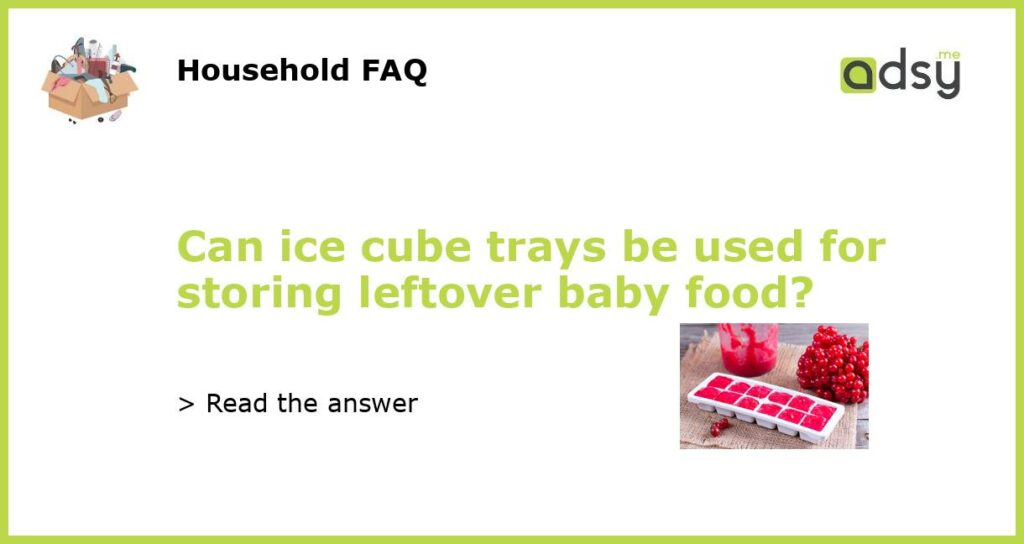Can You Use Ice Cube Trays to Store Leftover Baby Food?
As a new parent, you’re likely trying to navigate the confusion that comes with feeding your baby. One question that often arises is how to effectively store leftover baby food. While there are many storage containers available on the market, some parents have found success in using ice cube trays. But is that really a good idea? Let’s explore the pros and cons.
Pros of Using Ice Cube Trays for Baby Food Storage
One of the main advantages of using ice cube trays to store baby food is the portion control it offers. Rather than guessing how much food to give your baby, you can easily measure out the appropriate amount by filling one or more cubes in the tray. Additionally, ice cube trays are often made of plastic, which makes them lightweight and easy to stack in your freezer.
Cons of Using Ice Cube Trays for Baby Food Storage
While ice cube trays may seem like a great storage option for baby food, there are some downsides to consider. First and foremost, not all ice cube trays are made equal. Some may be made of materials that aren’t safe for food storage, such as BPA. Additionally, the food may stick to the tray, making it difficult to remove the cubes without damaging the food.
Best Practices for Using Ice Cube Trays to Store Baby Food
If you decide to use ice cube trays to store your baby’s food, it’s important to follow some best practices to ensure the food stays safe to eat. First, make sure the tray is made of safe materials, such as silicone or plastic that’s labeled as BPA-free. Next, be sure to cover the tray with plastic wrap or a lid to prevent freezer burn. Finally, label each cube with the type of food and date it was prepared, so you can keep track of how long it’s been in the freezer.
Alternatives to Ice Cube Trays for Baby Food Storage
If you’re not sold on using ice cube trays to store leftover baby food, there are other options available. Some parents prefer to use reusable food pouches, such as those made by Squish Delish, while others opt for glass storage containers. Ultimately, the choice is yours, but it’s important to consider the pros and cons of each before making a decision.






